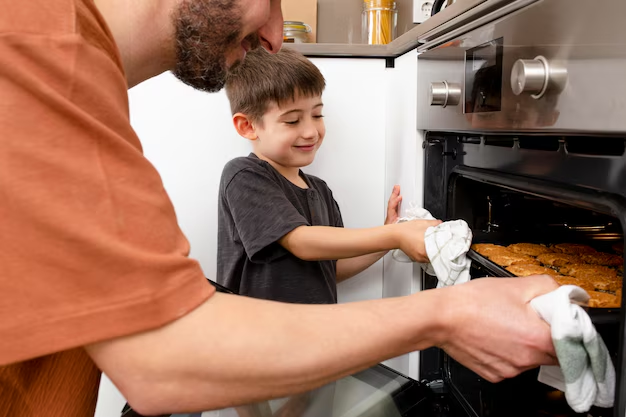Safely Handling Coolant: A Guide to Removing Freon from Your Refrigerator
When your refrigerator needs repair, one critical task might be removing the Freon, a common refrigerant used to cool air in the system. For those considering home appliance maintenance, understanding how to manage Freon removal is crucial. This guide offers a comprehensive look at the process, essential considerations, and alternative solutions, all while maintaining safety and compliance with environmental standards.
🧊 Understanding Freon in Refrigeration
What is Freon?
Freon is a trademarked name widely used to describe a group of man-made chemicals known as chlorofluorocarbons (CFCs) and, more commonly today, hydrofluorocarbons (HFCs). These chemicals are essential in refrigeration and air conditioning systems due to their ability to transition smoothly between gaseous and liquid states, effectively transferring heat.
Why Remove Freon?
Removing Freon might be necessary for several reasons:
- Repairs: If the refrigerator's compressor or any cooling component requires repair, Freon removal is often necessary.
- Disposal: Old refrigerators must have Freon properly extracted before disposal or recycling to prevent environmental harm.
- Replacement: Upgrading to newer, more eco-friendly refrigerants requires Freon removal.
🛠️ Preparing for Freon Removal
Legal and Safety Precautions
Removing Freon isn't merely a DIY task you can tackle without preparation or certification. Due to environmental risks, it's regulated under environmental law in many regions. Before proceeding:
- Certification: Technicians must possess an EPA Section 608 Technician Certification in the United States or equivalent in other countries to handle refrigerants legally.
- Equipment: Use certified reclamation equipment designed to safely capture and contain refrigerant gases.
- Protective Gear: Ensure you have adequate protection, including gloves and goggles, to handle potential leaks or spills safely.
Tools and Materials Needed
To proceed with Freon removal, gather the following:
- Recovery machine
- Refrigerant recovery cylinder
- Manifold gauge set
- Leak detector (optional but recommended)
🚧 Step-by-Step Guide to Freon Removal
Step 1: Preparation and Safety Checks
Begin by unplugging the refrigerator and moving it to a well-ventilated area. Ensure that the surface is dry and stable, preventing potential hazards during the process.
Step 2: Setting Up the Equipment
Connect the Manifold Gauge Set: Attach the low-pressure side of your manifold gauge set to the low side service valve on the refrigerator. Ensure all connections are secure to prevent leaks.
Prepare the Recovery Machine: Connect the recovery machine to the manifold set. This machine will pull Freon from the refrigerator into a recovery cylinder, ensuring no gas escapes into the atmosphere.
Step 3: Recovering the Freon
Power on the Recovery Machine: Start the machine to begin siphoning the Freon into the recovery cylinder. Monitor the pressure gauges to ensure a smooth operation.
Monitor the Process: Regularly check connections and the gauge, ensuring the pressure drops to a safe, expected level as Freon is removed.
Step 4: Finalizing the Process
Once completed, double-check all valves and connections to ensure no remaining Freon remains in the system. Carefully detach the equipment, and ensure the recovered Freon is stored adequately per the regulatory guidelines.
⚖️ Environmental and Legal Considerations
The Importance of Compliance
Handling Freon improperly not only risks safety but can cause significant environmental damage. Freon release contributes to ozone depletion and climate change. To mitigate risks, adhere strictly to local, regional, and international regulations governing refrigerant handling.
Eco-Friendly Alternatives
Modern regulations increasingly favor refrigerants with lower Global Warming Potential (GWP). As you work on removing Freon, consider transitioning to these alternatives, ensuring greater compliance and environmental responsibility.
🛠️ Alternatives to DIY: Professional Services
Freon removal may seem feasible for those equipped to handle technical tasks. However, there are valid reasons to consider hiring professionals:
- Safety Assurance: Professionals reduce the risk associated with handling hazardous chemicals.
- Time Efficiency: Experts can often complete the task faster and more efficiently, avoiding trial-and-error approaches.
- Regulation Compliance: Hiring certified professionals ensures full compliance with environmental regulations.
Utilizing professional services can offer peace of mind with the added benefit of guarantees or warranties on work performed.
🔄 responsibly recycling and disposing of your refrigerator
Proper disposal of your refrigerator and its components is paramount to environmental safety. After Freon removal, ensure the remaining materials are recycled or disposed of according to local guidelines. Refrigerator bodies contain metal, plastic, and glass components that are recyclable, and many municipalities offer specific disposal services for such appliances.
🔍 Summary of Key Takeaways
Here's a summary of crucial points to remember when dealing with Freon removal from refrigerators:
- Certification Required 🏅: Legal handling of Freon requires specific certification.
- Proper Equipment Required 🛠️: Use certified machinery designed for refrigerant recovery.
- Safety First ⚠️: Prioritize safety with adequate gear and controlled environments.
- Professional Help 🤝: Consider professional services for efficiency and compliance.
- Responsibly Dispose 🌿: Recycle and dispose of materials responsibly to protect the environment.
Navigating Freon removal requires careful attention to legal standards, safety practices, and environmental considerations. Whether tackling this yourself or hiring professional services, understanding the intricacies of refrigerant handling is essential in maintaining both safety and compliance. By making informed choices, damages to the environment can be minimized, ensuring a sustainable future for appliance usage and disposal.
Remember, each step of the process plays a critical role in the service and disposal of refrigeration units, reflecting a commitment to responsible, environmentally sound practices.
